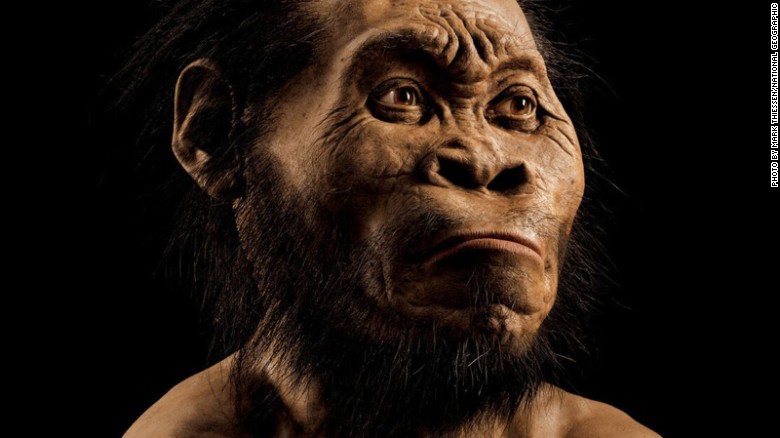Africa ExPress
10 settembre 2015
All’interno dell’ insieme di grotte, Rising Star, in Sudafrica, ad un’ora di macchina da Johannesburg, è stata ritrovata una camera mortuaria con resti di scheletri appartenenti a quindici individui di una nuova specie umana.
I “naledi” ( corpo luminoso celeste tradotto letteralmente dalla lingua Sotho del sud), come sono stati chiamati dai ricercatori, sono stati classificati nel gruppo “Homo”, dunque si tratta di un nostro antenato, in grado di organizzare riti funebri. Lee Berger, a capo dei ricercatori, crede che i naledi abbiano vissuto in Africa tre milioni di anni fa e potrebbero essere l’anello di congiunzione tra bipiedi più primitivi e l’uomo.
Sempre secondo Berger, la scoperta è importantissima, in quanto si tratta di una specie estinta, finora sconosciuta, scoperta solo ora nella Camera Dinaledi nelle grotte di Rising Star, la culla dell’umanità.
L’Uomo Naledi è caratterizzato da una massa corporea e da una statura simile a un essere umano piccolo, iI cui cranio è particolarmente ridotto, il suo volume è simile all’australopiteco. La sua morfologia è unica, ma assomiglia a quella del primo Homo sapiens, inclusa quella del Homo erectus, Homo habilis, homo rudolfensis.
[embedplusvideo height=”367″ width=”600″ editlink=”http://bit.ly/1KcTyhg” standard=”http://www.youtube.com/v/PVQvCQgl_MA?fs=1&vq=hd720″ vars=”ytid=PVQvCQgl_MA&width=600&height=367&start=&stop=&rs=w&hd=1&autoplay=0&react=1&chapters=¬es=” id=”ep3478″ /]
Proprio perché è primitivo, la dentatura è piccola e semplice nell’occlusione morfologica. Le tecniche manipolative delle mani e del polso sono simili a quelle umane, altrettanto il piede e l’arto inferiore. Il suo aspetto umano è in netto contrasto con la parte posteriore del cranio, più simile all’australopiteco, come pure il tronco, le spalle, il bacino e il femore. E’ il più grande raggruppamento di una singola specie di ominidi mai ritrovato in Africa.
[embedplusvideo height=”367″ width=”600″ editlink=”http://bit.ly/1KcTWfG” standard=”http://www.youtube.com/v/oxgnlSbYLSc?fs=1&vq=hd720″ vars=”ytid=oxgnlSbYLSc&width=600&height=367&start=&stop=&rs=w&hd=1&autoplay=0&react=1&chapters=¬es=” id=”ep7324″ /]
Il tunnel che porta alla camera mortuaria è assai stretto ed angusto. Non ci si arriva per caso, bisogna essere agili e consci di voler andare proprio in quel luogo. Gli scienziati hanno dimostrato che la morfologia della grotta non è mai cambiata durante i millenni. Risulta dunque chiaro che i naledi erano in grado di organizzare loro riti funebri.
Africa ExPress
A chronology of human evolution (from the BBC)
Ardipithecus ramidus (4.4 million years ago) : Fossils were discovered in Ethiopia in the 1990s. Pelvis shows adaptations to both tree climbing and upright walking.
Australopithecus afarensis (3.9 – 2.9 million years ago) : The famous “Lucy” skeleton belongs to this species of human relative. So far, fossils of this species have only been found in East Africa. Several traits in the skeleton suggest afarensis walked upright, but they may have spent some time in the trees.
Homo habilis (2.8 – 1.5 million years ago) : This human relative had a slightly larger braincase and smaller teeth than the australopithecines or older species, but retains many more primitive features such as long arms.
Homo naledi (Of unknown age, but researchers say it could be as old as three million years) : The new discovery has small, modern-looking teeth, human-like feet but more primitive fingers and a small braincase.
Homo erectus (1.9 million years – unknown) : Homo erectus had a modern body plan that was almost indistinguishable from ours. But it had a smaller brain than a modern person’s combined with a more primitive face.
Homo neanderthalensis (200,000 years – 40,000 years) The Neanderthals were a side-group to modern humans, inhabiting western Eurasia before our species left Africa. They were shorter and more muscular than modern people but had slightly larger brains.
Homo sapiens (200,000 years – present) Modern humans evolved in Africa from a predecessor species known as Homo heidelbergensis. A small group of Homo sapiens left Africa 60,000 years ago and settled the rest of the world, replacing the other human species they encountered (with a small amount of interbreeding).


